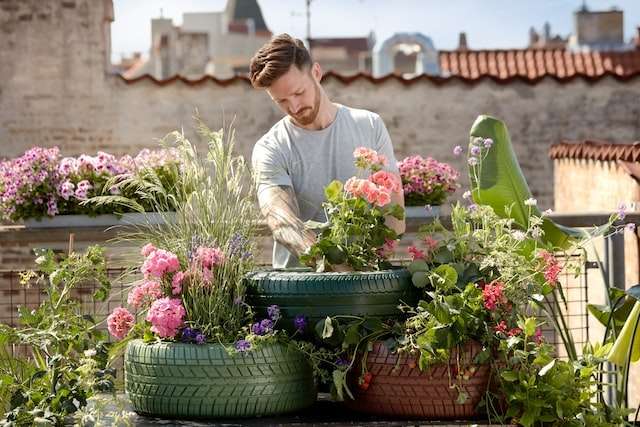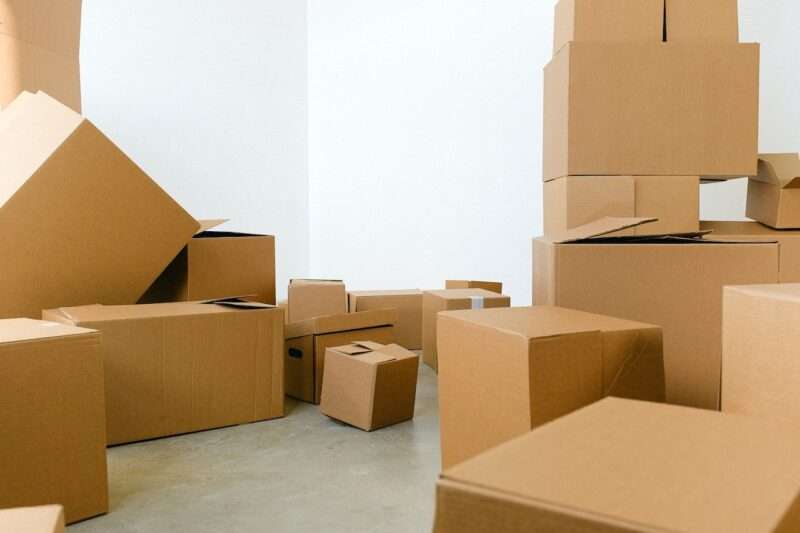By the second decade of the 21st century, recycling had become a household mantra, and city-issued recycling bins were available in nearly every neighborhood. People all over the world were urged to do everything they could to divert waste that was headed for incinerators or landfills to recycling facilities. However, there has not been the same level of effort put into encouraging the reuse of specific commodities rather than their recycling, despite the fact that doing so can have significant environmental benefits such as reducing energy consumption and pollution. That’s why we’ve decided to dedicate this article to reusing. We researched gardening tips and found simple ways to reuse cardboard boxes for gardening. Hopefully, we’ll be to inspire you to adopt new, green habits in your household (or at least in your garden).
Simple ways to reuse cardboard boxes for gardening
Cardboard boxes tend to pile up during major life transitions. For instance, if you have recently moved, there are probably many used cardboard boxes lying around your house. You can always recycle them but reusing leftover boxes after the move is an even better idea.

Using them in your garden can give unused cardboard boxes a second life. It’s good for the planet and helps avoid the problems that result from too much cardboard sitting in landfills. The good news is that gardeners can find various creative and low-cost solutions to repurpose their boxes. Here are just some examples.
#1 Cardboard helps eliminate weeds in your garden
You might be surprised to learn that cardboard can be used to help keep weeds from sprouting again. This is a tried-and-true method from the world of organic gardening.
You may place the cardboard on top of your weeds (Be sure to take off all of the packaging tapes, though). Add a layer of bark at least three to four inches thick on top of the cardboard, and that’s it. Since the weeds can’t grow in the dark, you’ll save time and effort tending to your garden because they won’t return.
Another simple way to reuse cardboard boxes for gardening is to store weeds in them. The best part is that you can transfer the weeds directly with the box into your compost bin. For zero dollars, cardboard boxes are the best way to move your weeds from one location to another.
#2 Use cardboard boxes to improve the soil
Did you know you can use cardboard to enrich your soil? The process is called mulching, and it’s effortless. All you have to do is place cardboard in your garden and cover it with quality soil. The box material will decay and create richer, nutrient-rich soil than you had before.
Remember that the mulching process can take anywhere from four to twelve months. Depending on the local climate (rain, moisture, sun, etc.), it might take longer for cardboard to completely disappear and enrich the soil. This is especially useful if you’re starting your garden from scratch.
#3 Reuse cardboard boxes as containers when gardening
The cost of planting in containers nowadays can quickly accumulate. So why not put that extra cash toward the plants themselves by growing them in cardboard boxes? Use them as you would any other standard container: Soil in, make sure there’s good drainage, and keep it moist.

But would a cardboard container truly last through a season of watering, wind, rain, and everything else you and nature may throw at it? Many gardeners from throughout the country put them to the test, and the results were positive. Keep in mind that, with the correct plants, the container won’t even be visible by the end of summer. You can reinforce any vulnerable spots with tape if you desire. Alternatively, you might use a plastic bag with holes cut in it to line the box and prevent any moisture from collecting.
#4 Create a composter
If you’d like to start home composting, we have good news for you – you can use the extra cardboard boxes you have in your place. Instead of purchasing soil, you may easily create your own nutrient-rich soil out of cardboard boxes.
Simply dig a hole in your composting space, set down the cardboard boxes, and start piling on the weeds, leaves, and trimmings. You can even add coffee grinds. Now you can put your old moving boxes to good use while also starting a compost pile.
#5 Use cardboard to create a pathway
Though it may seem daunting, a basic garden walkway can be built in just an hour. Mulch and a path outline (cardboard, bricks, etc.) are all that you’ll need.
You’ll be working outdoors, so you can put the cardboard down straight on the grass or dirt. Grass and weeds shouldn’t grow through cardboard because of its thickness. (Just add extra cardboard if that happens.) Create the path’s outline by arranging the cardboard in the desired configuration. Use bricks as a border, then fill in around them with mulch and soil.
#6 Use cardboard boxes for seed starters
The materials needed to start seeds might quickly become expensive – from grow lights to specialized containers to expensive mats. When beginning seeds indoors, cardboard boxes are ideal since they allow you to extend the seedlings’ developing period, leading to healthier plants. (For best outcomes, make sure they have access to enough light.)

Once the seedlings are ready, you can simply drop the whole thing, box and all, into your garden. That way of thinking works wonderfully with children, too. They can learn the basics of gardening on a small scale first, such as the importance of thinning seedlings, remembering to water, and practicing patience. Now that can be a fun family project!
Final thoughts
There are plenty more ways you can reuse cardboard boxes for gardening as well as inside your plant-loving home. For instance, you can use them to start a herb garden or even grow some vegetables inside your home.

Author’s bio: Mary Lowenstein was a successful real estate agent in NYC. Due to her husband’s new job, they moved to Larimer County, Colorado. Even though she wasn’t trill about this change, she soon fell in love with gardening. So now, five years later, Mary is running a local store where she sells fresh produce from her garden. She is also a part-time content writer for Hansen Bros. Moving & Storage, and she enjoys sharing her experience with everything from real estate to gardening tips. However, she is hoping to expand her (currently) tiny farm and fully commit to it.
Photos used:
Cardboard Boxes
Couple with cardboard boxes
Man with tire planters
Overhead view of potted seedlings
